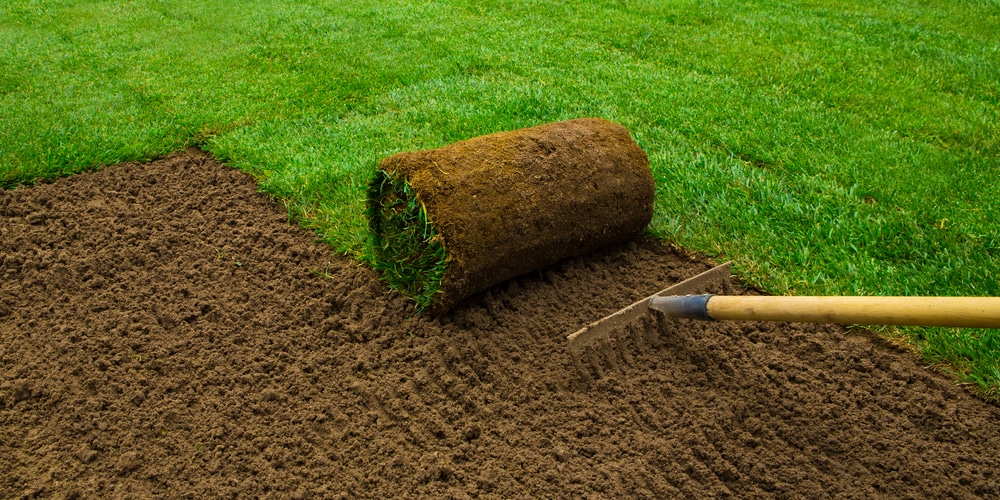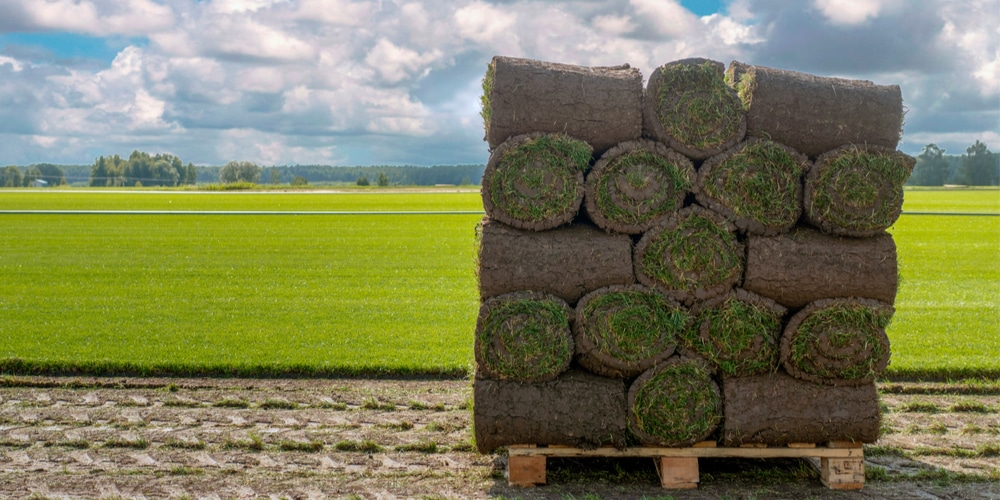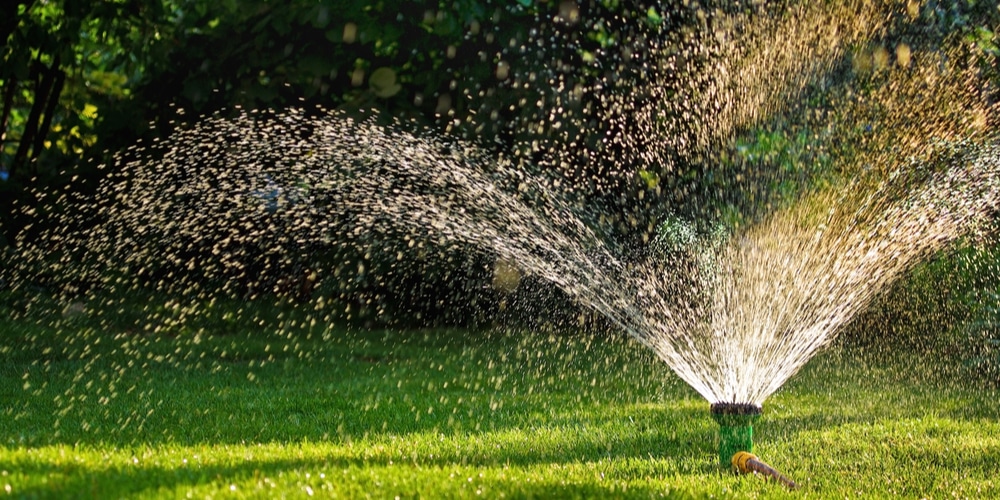Having a nice lawn with newly planted sod can complement other landscape features. Laying a new sod lawn will make your property more aesthetically appealing if you plan to sell or give you a place to sit or play with your family.
Laying new sod rather than planting seeds may be the easy option as it reduces lawn maintenance. Sod has already undergone the necessary care and attention it needs after being seeded. Installing new sod may seem like the easy option as it requires less care, but you’ll need to ensure it’s watered enough and that the ground is correctly prepared before laying the sod.
While you can lay new sod over grass, you’ll need to do some prep work as the sod needs to be placed on top of freshly turned soil so it can establish its root system and grow effectively.
How to Lay Sod Over Grass

The best time of year to lay new sod is in the spring or summer. It’s best to check the soil temperature to ensure it’s reached 65 degrees Fahrenheit before laying your new sod. Follow these top tips if you plan to put sod over grass.
1. Clear away debris and prepare the ground
Before you can lay new sod over your grass, you’ll need to prepare the soil. First, collect any debris such as rocks, sticks, or rubbish and dispose of it. If you have any toys or landscaping features in your yard, you’ll also need to move these out of the way. You can then pull up any weeds and use a herbicide to get rid of any weeds that are tricky to pull.
You can then rake your yard, and if you’re not laying sod across your whole yard, you can mark out the area where the sod will go. Next, till the soil in your yard using a mechanized tiller. This will break up your existing grass, including the roots. Apply starter fertilizer to your newly tilled soil. Sod needs its own fertilizer. You may also like to add about an inch of compost on top of the ground. This can be mixed into the soil by tilling or raking.
Finally, rake the soil to ensure that it’s flat. You can also examine your yard for any bumps or holes. Fill in holes and rake over bumps to ensure a smooth surface. Next, it’s time to roll your lawn using a roller drum. It’s best to roll your yard lightly, you don’t want to compact the soil too much, or it will be difficult for the new sod to establish roots. You can then water your lawn and allow it to settle for about a week.
2. Lay the new sod
Before installing your new sod, you should moisten the soil using a hose or sprinkler. Then start laying the sod from the side of your yard. It’s good to begin lying the sod against a path or wall. Remove any excess sod using a knife. Lay each roll of sod against the one before it. If you’re laying rolls of sod that are shorter than the length of your yard, you can alternate between longer and shorter lengths and stagger the layers to make a brick-wall pattern.
After you’ve laid all the sod, it’s a good idea to fill in the seams with soil. If any of the sod looks uneven, you can put some soil underneath lower pieces to create a uniform height. You can then gently roll your lawn to ensure the sod is pressed firmly in place.
3. Watering the new sod
Water the sod well every day for the first two weeks so that it can develop a healthy root system. Ensure that your new sod remains moist by watering in the early morning and the evenings. It’s best to avoid watering your lawn in the hottest part of the day as this could scorch the grass, and much of the water will evaporate. Here’s a full in depth guide on exactly when to water new sod.
Bottom Line: You Can Put Sod Over New Grass, But Prepare
You can put new sod over existing grass; however, you’ll need to prepare your yard correctly. If you have one, make sure you keep your dog off the new sod for a few weeks. If you can’t lay the sod right away, here’s how to keep it alive.
It’s no good placing sod on top of grass if it hasn’t been tilled as the sod won’t be able to grow a robust root system. You can rent a tiller, or purchase a tiller for breaking new ground. By following the above steps, you’ll be able to create a healthy green lawn that’s able to thrive year-round.

